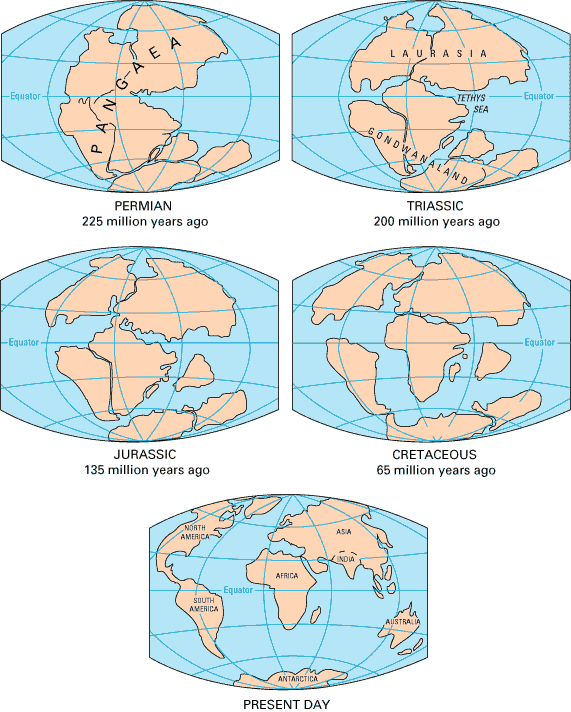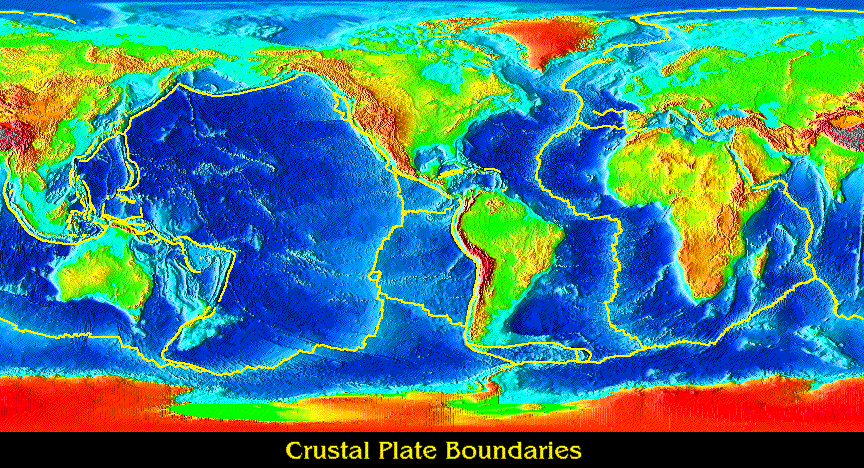
In the 1960s, evidence was found for the spreading of the sea floor of the Atlantic Ocean. It was realized that the continents don't move over the crust, but rather that the crust itself is in motion. This was the birth of the modern theory of plate tectonics.
The lithosphere is the solid crust and upper mantle of the Earth. It "floats" upon the plastic, fluidlike, and convective part of the mantle. Giant crustal plates move due to convective "currents'' in the mantle.

Look at the map.
Where plates ram into one another we have subduction zones, where ocean plates are pulled back into the mantle. Volcanoes are common here. On land, mountain ranges can form.Example: San Andreas Fault -- interface between the North American and Pacific plates Plates move slowly (few cm/yr): LA will be next door to SF in 20 million years... Motion not smooth. Plates "snag" against one another, then suddenly release: Earthquake!
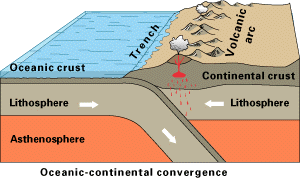
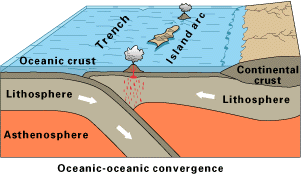
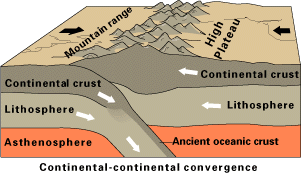
Plate tectonics is essentially a continual recycling of material between the Earth's crust and mantle:
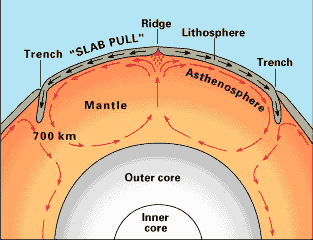
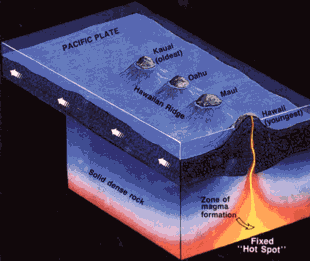
The continents are merely along for the ride on the crustal plates. 225 million years ago, all the continents were part of a single large mass known as Pangaea:
